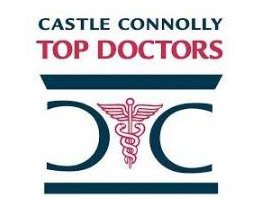Kyphosis is a curving of the upper spine that often gives the upper back a rounded or slouched look. The curvature is front-to-back. Kyphosis can occur at any age, although it is rare at birth. There are different types of kyphosis, including postural kyphosis (more common in adolescent girls) and Scheuermann’s kyphosis (more common in adolescent boys).
Older people can develop kyphosis, as well. People with osteoporosis are at risk for spinal fractures, which may contribute to kyphosis. Individuals with connective tissue disorders, such as Marfan syndrome, are also at elevated risk for kyphosis.
Symptoms of kyphosis
Symptoms of kyphosis can be mild or severe. Typical symptoms include:
- Visible change in posture, particularly rounded shoulders or hunchback
- Breathing difficulties
- Back pain, tenderness
- Stiffness
- Slouching
Kyphosis can cause pain and, in severe cases, may even be life-threatening.
What causes kyphosis?
There are many factors that can cause or contribute to the development of kyphosis:
- Developmental problems
- Degenerative diseases, such as arthritis
- Osteoporosis with compression fractures
- Trauma (injury)
- Connective tissue disorders
- Some endocrine diseases.
- Infection (such as tuberculosis)
- Paget’s disease
- Polio
- Cerebral palsy
- Muscular dystrophy
- Neurofibromatosis
- Spina bifida
- Tumors
- Spondylolisthesis (vertebra slipping)
- Scoliosis
How is kyphosis diagnosed?
University Spine Center diagnoses kyphosis first by looking for abnormal curvature of the spine. Sometimes kyphosis can be present before there are visible outward signs.
If kyphosis is present, the University Spine Center team will conduct tests to determine if there have been any changes to the nervous system, such as weakness, changes in sensation (tingling, loss of sensation) or paralysis. Other tests may include:
- X-ray
- MRI scan
- Tests of lung function (if breathing is affected)
Treatment
University Spine Center will discuss with you the most appropriate treatments based on the cause of the disorder and your age and health condition. Typical treatment options include a brace, physical therapy, medication, surgery or a combination.
Although kyphosis is relatively rare at birth, those who have so-called “congential kyphosis” usually have it surgically corrected at an early age.
Scheuermann’s kyphosis, which primarily affects adolescents, is often treated with a brace and physical therapy, although surgery is sometimes required. Young patients with Scheuermann’s disease tend to have good outcomes. Scheuermann’s kyphosis often comes to a halt when the child has stopped growing.
If kyphosis is caused by another condition, that underlying condition may require treatment. For instance, in patients with compression fractures associated with osteoporosis, it is typical to treat the osteoporosis first.
Surgery is not the first-line approach for kyphosis, but it is often a successful treatment option for certain kyphosis patients. This is particularly true if the kyphosis causes pain or a debilitating deformity.
Prevention
There is no way to prevent kyphosis, but early detection and treatment of Scheuermann’s disease may help avoid surgery. In older patients, preventing or treating osteoporosis may help prevent kyphosis. University Spine Center can provide you with complete information specific to your individual case.






